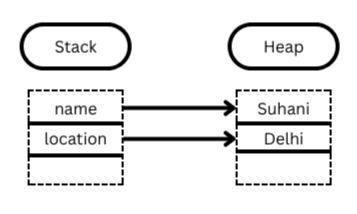Upcasting and Downcasting In java
- Vaishnavi
- Sep 25, 2022
- 1 min read
Overview
In all the programs, the type of a reference variable and the object it points to will be of the same type. For Example -
Employee e=new Employee()Here, e is a reference variable of type Employee pointing to the Employee object. But its possible for a reference of a parent to refer to a child's class object.
ParentClass pc = new ChildClass()This can be done by upcasting and downcasting n java.
Upcasting In java
When a reference variable of the Parent class refers to an object of the Child class, it is known as Upcasting. It is done implicitly i.e., done automatically.
Upcasting can be done whenever there is an IS-A relationship.
For Example -
ParentClass pc = new ChildClass()Say, a Vehicle is the parent class and a Car is the child class. Objects for these classes can be created as:
// Vehicle reference pointing to Vehicle Object
Vehicle v=new Vehicle(); // Car reference pointing to Car Object
Car c=new Car(); // Vehicle reference pointing to Car Object
Vehicle v1=new Car(); Note that a parent class reference can hold a child class object. This we call Upcasting.
Downcasting In Java
Casting a reference of a Parent class to one of its child classes is called
Downcasting. It only can be done manually.
Vehicle v=new Car(100,5); //Upcasting
//child class specific method, say getNoOfSeats()
Car c= (Car) v; // Downcasting
c.getNoOfSeats();created by Vaishnavi Chaurasia @TechInfinity
_edited.jpg)

Comments